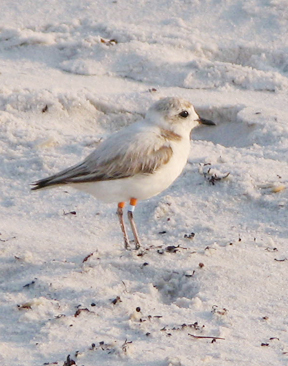
Be watchful and respectful of wildlife, it’s a matter of survival
With nesting season under way for shorebirds like the snowy plover, black skimmer and American oystercatcher, the Florida Fish and Wildlife Conservation Commission (FWC) asks beachgoers to take care not to disturb their nests.
Well-informed, courteous beachgoers can provide needed relief to these stressed species.
The snowy plover, for example, nests along Gulf Coast beaches through August, and its population has shrunk to as few as 200 pairs in this state. Increased human activity and development on coastal barrier island beaches are among the key reasons that snowy plovers and other beach-nesting species are listed as threatened or endangered. Shorebird nesting continues through August.
“By recognizing the warning signs that you have entered an area of beach where shorebird nesting is taking place, you can save chicks and eggs from a needless death,” said Nancy Douglass, who works on shorebird conservation at the FWC. “If you notice birds suddenly stand up, become agitated or fly about at your approach, you are likely entering a nesting site.”
Above the high-tide mark, snowy plovers and other species, such as Wilson’s plovers and least terns, lay well-camouflaged eggs in shallow depressions on the sand. This behavior makes the eggs nearly invisible to predators. Unfortunately, the camouflage effect also makes these eggs nearly invisible to the untrained human eye.
Further complicating the issue of shorebird conservation: Any disturbance by people, pets or vehicles can cause shorebirds to temporarily or permanently abandon their nests, resulting in the death of young chicks or the destruction of the eggs by predators. Once shorebird parents are frightened from the nest, exposed chicks or eggs can succumb to the heat of the Florida summer sun in as little as five minutes, and predation by gulls and crows increases significantly when parents are forced to leave, even for a few moments.
What can you do to help?
• Keep your distance. If birds become agitated or leave their nests, you are too close! A general rule is to stay at least 300 feet from a nest.
• Respect posted areas. Some shorebird nesting areas are posted with “symbolic fencing,” which consists of signs on posts connected by twine marked with flagging tape. Avoid marked nesting areas and cross only at designated pathways. These posted beach areas may shift during the nesting season, depending on where the birds have chosen to lay eggs at any given time.
• Never intentionally force birds to fly. When birds are chased or disturbed, they use energy they need for nesting and migration.
• Keep pets away from nesting areas. Even well-behaved pets can be perceived as a threat. If you take pets to the beach, keep them leashed and away from nesting areas.
• Keep the beach clean and do not feed wildlife. Food scraps attract predators such as raccoons, gulls and crows to our beaches. Litter can entangle birds, sea turtles and other wildlife.
• Spread the word. If you see people disturbing nesting birds, gently let them know how their actions may hurt the birds’ survival. If they continue to disturb nesting birds, please report their activities to the FWC’s Wildlife Alert hotline at 888-404-FWCC (3922), #FWC or *FWC on your cell phone or by texting Tip@MyFWC.com.
Because many Florida shorebirds are listed as threatened or endangered, it is a violation of state and federal laws to harass or take any endangered or threatened birds, their eggs or young.
To learn more, download the “Share the Beach with Beach-Nesting Birds” brochure from the “Living with Wildlife” area at MyFWC.com/Wildlife. Or check out the Florida Shorebird Alliance at www.flshorebirdalliance.org.
To learn more about Camp Helen State Park, click here.
